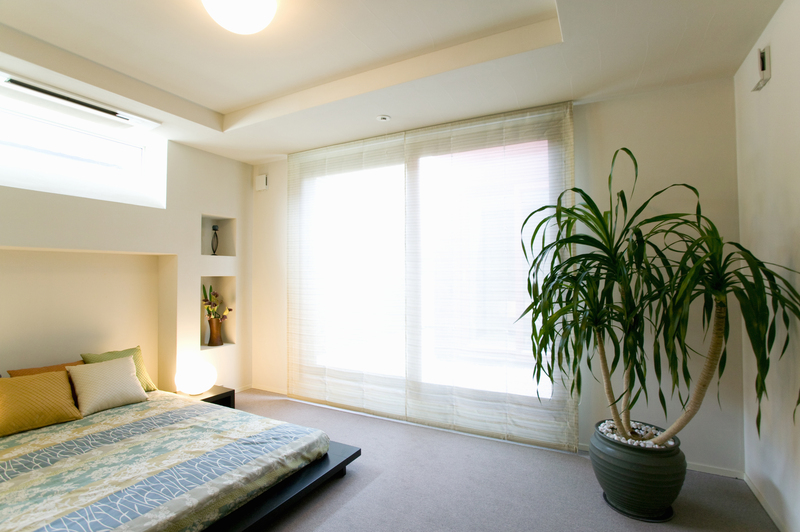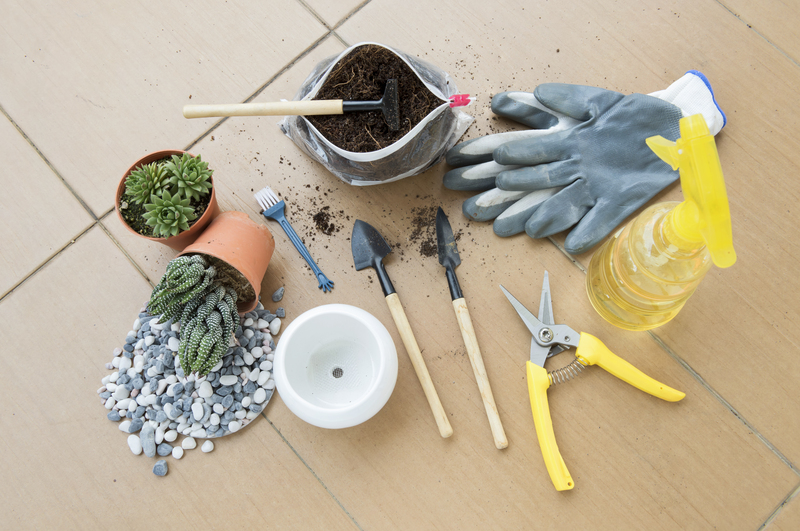Create a Secluded Garden Retreat with the Top Tall-Potted Plants for Screening
Would you like to turn your outdoor space into a peaceful haven away from prying eyes? If so, tall-potted plants for screening are one of the most versatile and attractive solutions. Whether you're looking to hide unsightly views, block neighbors' gaze, or simply create a serene spot for relaxation, the right potted plants can be the key to transforming your garden into a true sanctuary.
Why Use Tall Potted Plants for Privacy Screening?
In today's busy world, outdoor privacy has become more valuable than ever. Not all of us have the luxury of mature trees or permanent fences, and that's where tall-potted screening plants shine. They provide instant, flexible screens that can be rearranged or removed as needed.
- Versatility: Move your potted plants wherever privacy is needed, even seasonally.
- Space-Saving: Perfect for balconies, patios, rooftop gardens, and small backyards.
- Low Commitment: Great for renters or anyone who can't build permanent fences.
- Decorative Value: Add beauty, color, and texture to your retreat with foliage and blooms.
- Added Height: Tall varieties offer elevated screening for maximum seclusion.
Looking for inspiration? Below, explore the best tall-potted plants for garden screening and learn how to use them to create your secluded oasis.

Top Tall-Potted Plants for Screening and Privacy
Creating privacy with potted plants requires choosing species that grow tall, dense, and look attractive year-round. Here are some of the most effective and stylish choices for a secluded garden retreat:
Bamboo (Phyllostachys & Bambusa species)
- Why bamboo? Bamboo is unbeatable for fast growth and lush, evergreen screening.
- Best Types: Clumping bamboo (e.g., Bambusa multiplex, Fargesia rufa) are less invasive and better for containers.
- Care: Requires large, sturdy pots (minimum 18-24 inches in diameter). Water regularly and feed in spring and summer.
- Tip: Choose non-invasive clumping types to avoid escapee roots.
Italian Cypress (Cupressus sempervirens)
- Why Italian Cypress? This classic Mediterranean tree offers statuesque, vertical interest, growing up to 25-30 feet tall.
- Container Suitability: Thrives in deep pots and can be trimmed for shape control.
- Care: Prefers full sun and well-drained soil. Water well while young, then less frequently when mature.
- Bonus: Resistant to deer and drought once established.
Arborvitae (Thuja occidentalis)
- Why Arborvitae? A lush, dense, columnar evergreen that grows well in pots and offers effective year-round screening.
- Top Picks: 'Smaragd' (Emerald Green), 'Brabant', 'Techny' for vertical screening.
- Light Requirements: Full sun to part shade.
- Care: Fertilize annually, keep soil moist but never soggy.
Privet (Ligustrum species)
- Why Privet? Fast-growing, evergreen or semi-evergreen shrubs prized for privacy hedges.
- Features: Dense growth blocks sightlines quickly.
- Container Tips: Opt for large, stable pots to support mature growth.
- Care: Prune regularly to maintain height and fullness.
Oleander (Nerium oleander)
- Why Oleander? Tall, evergreen shrub with spectacular blooms in pink, white, and red.
- Benefits: Extremely drought-tolerant once established.
- Container Notes: Suited to warm climates and large planters.
- Warning: All parts are toxic--keep away from pets and children if they may nibble.
Fargesia Bamboo
- Why Fargesia? Clumping, non-invasive bamboo ideal for smaller pots and spaces.
- Height: Reaches 8-12 feet over time.
- Best Feature: Does well in dappled sunlight/shade--great for east- or north-facing patios.
Bay Laurel (Laurus nobilis)
- Dual Purpose: Edible leaves plus dense growth make it a stylish and functional privacy plant.
- Height: Up to 10-12 feet in a large container.
- Care: Prune to maintain columnar or round shape and encourage upright growth.
- Bonus: Provides aromatic foliage for your kitchen!
Photinia (Photinia x fraseri 'Red Robin')
- Why Photinia? Brilliant red new shoots and reliable evergreen leaves--an eye-catching choice for living screens.
- Height: 10-12 feet with regular pruning.
- Potted Growth: Needs a large, stable container for support.
English Laurel (Prunus laurocerasus)
- Why English Laurel? Large, glossy leaves and a robust, upright habit. Perfect for dense screens on patios or terraces.
- Height: Reaches up to 15 feet, but easily pruned for pot culture.
- Light: Tolerates part shade as well as sun.
False Holly (Osmanthus heterophyllus)
- Benefits: Dense, spiny foliage mimics holly, producing fragrant white flowers in autumn.
- Height: 8-12 feet in larger pots.
- Advantages: Tough and adaptable, even to challenging urban conditions.
How to Arrange Tall-Potted Plants for Maximum Privacy and Beauty
Selecting the best screening plants in pots is just the first step. The way you arrange your pots and containers will make all the difference in creating that tranquil, private oasis.
Grouping and Layering
- Cluster Tall Varieties: Place the tallest screening plants at the back or in the area that needs the most coverage.
- Add Mid-Height Foliage: Use medium-sized shrubs (e.g., boxwood, pittosporum) in pots in front to soften the overall look.
- Edge with Groundcovers: Trail ivy, creeping Jenny, or flowering annuals from smaller pots at the base for a finished effect.
Pot Placement and Movement
- Flexible Positioning: Pots can be rearranged seasonally or for gatherings to increase privacy or open up views.
- Use Platforms or Stands: Elevate pots for extra height--ideal for decks and balconies.
- Mobile Privacy Walls: Attach pots to rolling plant dollies for effortless movement.
Color and Texture
- Mix Leaf Textures: Pair glossy-leaved laurel with feathery bamboo or spiky holly for visual interest.
- Seasonal Interest: Choose varieties that offer blooms, berries, or striking new foliage to keep your retreat lively all year.
- Pot Design: Use matching or contrasting containers to enhance the style of your garden haven.
Choosing the Right Pots for Tall Screening Plants
Pots matter! A healthy, vigorous privacy screen depends on the right containers. Here's how to choose the best ones:
- Material: Sturdy, weather-resistant options like terracotta, glazed ceramic, fiberglass, or heavy-duty resin.
- Size: Minimum diameter of 18-24 inches for large plants; larger volumes support healthier, taller growth.
- Stability: Taller plants need wide, heavy pots to prevent tipping, especially in windy sites.
- Drainage: Always ensure several drainage holes to prevent waterlogging roots.
Care and Maintenance Tips for Container Privacy Plants
- Consistent Watering: Potted plants dry out much faster than in-ground specimens. Check moisture regularly, especially in summer heat.
- Feeding: Use slow-release fertilizer in spring for healthy growth and lush foliage.
- Pruning: Trim back tall or leggy growth to maintain form, density, and desired height.
- Repotting: Every 2-4 years, refresh soil or move to larger pots to avoid cramped roots.
- Winter Care: In colder climates, select hardy species or move pots to sheltered locations during freezing weather.
Expert Tips for Creating a Secluded Garden Retreat with Tall-Potted Screening Plants
- Design with Purpose: Visualize your retreat--do you want full enclosure, partial screening, or simply a focal point?
- Mix Heights and Widths: Broaden your palette with narrow, upright trees and bushier shrubs for a balanced design.
- Add Elements: Combine potted screens with outdoor curtains, trellises, or water features for enhanced privacy and tranquility.
- Go Vertical: Use living walls or stacked planters if floor space is limited.
- Embrace Scent: Include lavender, jasmine, or gardenia near seating areas to make your retreat inviting through fragrance as well as foliage.

Frequently Asked Questions about Tall-Potted Privacy Plants
What are the tallest potted plants for privacy?
Bamboo, Italian Cypress, and Arborvitae are among the tallest options for container privacy, reaching heights of 15-30 feet depending on variety and pot size.
Can I use fruit trees as screening plants in pots?
Yes! Columnar apple, fig, or olive trees can create attractive, edible privacy barriers when grown in large containers.
How close do I place pots for effective screening?
For continuous coverage, position pots so foliage slightly overlaps. Spacing varies by species, but generally 24-36 inches apart works for dense screens.
Conclusion: Transform Your Space with Tall-Potted Privacy Screens
If you dream of creating a secluded garden retreat, look no further than tall-potted screening plants. With so many options for different climates, styles, and spaces, you can achieve privacy, beauty, and flexibility--whether on a tiny balcony or a sprawling terrace. Choose the best tall screening plants in pots for your needs, proper pots, and strategic placement, and you'll soon enjoy a personal sanctuary where you can relax far from the rest of the world. Start planning your private garden oasis today!
For more tips on outdoor privacy, landscaping ideas, and the latest on tall-potted plants for screening, bookmark this page and check back for future updates!



